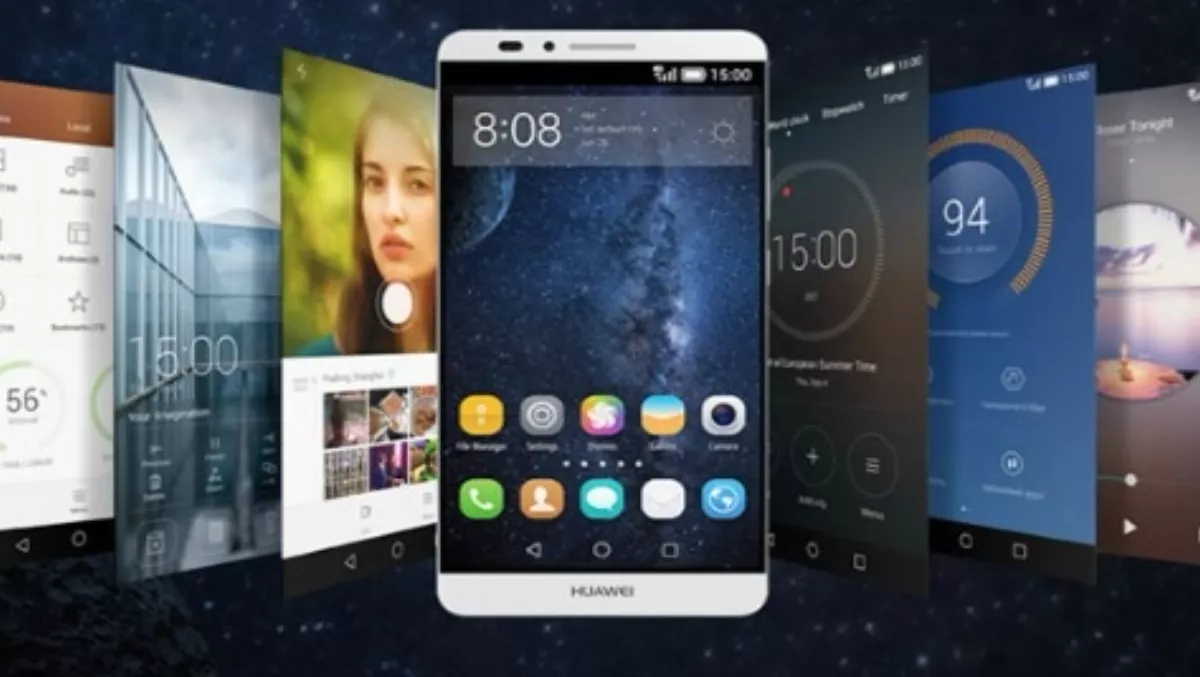
Hands-on review: Huawei Mate
Huawei's newest kid on the block, and the Ascend Mate is definitely a big boy, sitting on the phablet side of the fence. Its roomy 5" display can also do double duty as an aircraft carrier landing deck. Add to this a beefy spec and a reasonable $799 sticker price and Huawei have the makings of a great phone with acres of bang per buck value.
Look and feel
The Mate 7 is no shrinking violet – its huge. A 6-inch screen equates to a chassis that's 157mm long and 81mm wide. I don't have baseball catcher mitts for hands, but the Mate did prove usable with one hand. Much of this comes down to a well thought out design. A narrow bezel around the display means little space gets wasted and a thin body makes it easier to hold too.
Where many high-end smartphones are well designed and spec'd, they're often encased in Tupperware. This gives them a cheapish feel. Not the Mate. It has been finished in alloy and glass, giving it a definite premium feel.
Looks wise, the Mate looks to be the love-child of a Samsung's Galaxy S5 and Sony's Z3 with a hint of iPhone 6+ for good measure. The lack of a home button also gives it a cleaner look. This also allows for a larger screen, even though the Mate's chassis is about the same size as that of the iPhone 6+.
The review unit I received was white and silver, but dark grey and light gold models are also available.
Bells and whistles
Taking a leaf out of LG's playbook, the Mate has a rear mounted fingerprint scanner. Located just where your index finger rests when picking it up, taping the sensor unlocks and powers up the phone in a single smooth action. In use, it worked flawlessly and was a useful feature.
As nice as the idea of a fingerprint sensor is, they can be pretty frustrating when they don't work. In use the sensors accuracy surprised me. Not only did it recognise my dabs without fail, but it could do so regardless of which direction I picked up the phone and tapped the sensor.
While the Mate has a pin lock option, using a fingerprint to wake and unlock the phone proved to be dead handy. I could also use a fingerprint to authenticate PayPal payments or snap photos with the front facing camera.
The Mate doesn't have the QHD resolution display like LG's G3, but its 1,920x1,080 display was still vivid and bright. The screen also sports 367 pixels per inch, which is higher than the iPhone 6. High-res images looked good and even small text proved easy to read. The Mate's display is likely to appeal for streaming content from Lightbox, Quickflix or Sky TV's Neon service.
The phone is powered by Android 4.4.2 Kit Kat. Huawei has also re-worked their custom Android interface. There's no app tray - instead, all apps and widgets span the Mate's several home screens.
The pros and cons of this approach are likely to be more of a personal thing. iOS users migrating over to Android may find this appeals as the iPhone also doesn't have an app tray. Huawei's UI was also smooth and responsive.
As with other Huawei handsets, you're able to apply themes. These can change colours and wallpaper plus icons. The lack of an online theme store strikes me as a lost opportunity for Huawei. As the only handset maker offering customisable themes, the benefits of building a community around their themes could give Huawei an invaluable point of difference.
One app that was also a welcome addition was the Phone Manager. It allows you to clear out junk files (feeing up valuable memory), kill background processes (so the phone runs lag-free) and even set up a "Harassment Filter" (which blocks calls from specific numbers).
Interface aside, there's plenty going on under the Mate's hood. For a start there's a Huawei in-house designed octa-core processor. It consists of two quad-cores. One of the cores gets used for basic chores. The other more powerful core gets pressed into service for more demanding tasks. This approach balances processing grunt along with energy efficiency and battery life.
A side benefit of the Mate's large chassis is that has plenty of room for a generous 2,500mAh battery. With heavy use I wrung just over 17 and a half hours use, a big improvement over the times I'd managed with similar tests on other phones.
The Mate's 13-megapixel rear camera definitely impressed. Firing it up and enabling the built in HDR mode helped lift detail of shadows while shooting under low light conditions. In use I found that it helped to prevent images from being over exposed. The 8megapixel front shooter also has a Panorama Selfie mode. It lets users take ultra-wide wide panoramic shots.
Verdict
Huawei have got a lot right with the Mate. Its large screen is bright and vivid. Its octa-core processor supplies more than enough oomph for any apps you're ever likely to throw at it. The Mate's massive battery lasts a full day and then some. Add this to a premium build and reasonable sticker price and Huawei could have a winner on their hands with the Mate.

Tech Specs
RRP: $799 Network: LTE, UMTS, GSM 850/900/1800/1900MHz Size: 139.8mm (H) x 68.8mm (W) x 6.5mm (D) Weight: 124g Display: 5.0 inch, 1920 x 1080 resolution, 367ppi CPU: Hisilicon Kirin 910T Quad-core 1.8GHz OS: Android 4.4 .2 KitKat Memory/Storage: (RAM) 2 GB, ROM : 16 GB GPS: GPS/A-GPS/Glonass Connectivity: NFC, WiFi 802.11b/g/n, Bluetooth 4.0, Micro USB 2.0 Camera: (Rear)13MP (front) 8MP Battery: 2500mAh

